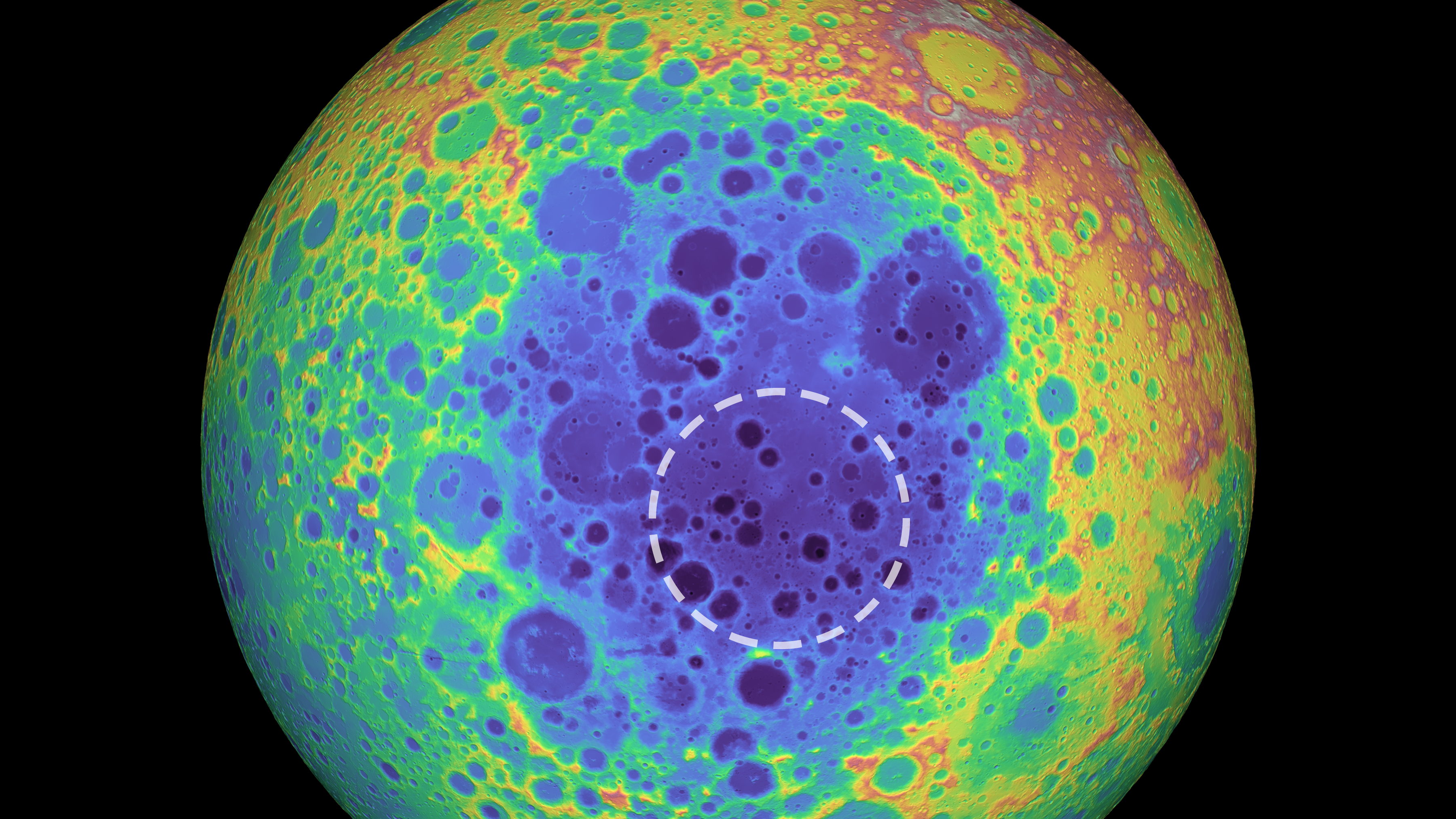Scientists Have Detected a Huge Anomaly Under the Moon’s Largest Crater
Credit to Author: Becky Ferreira| Date: Tue, 11 Jun 2019 19:11:32 +0000
A giant hunk of heavy material detected under the Moon’s largest crater may be the remains of an ancient asteroid or a solidified magma ocean, according to a recent study in Geophysical Research Letters.
The newly discovered anomaly is about five times as massive as the Big Island of Hawaii, said lead author Peter B. James, an assistant professor of planetary geophysics at Baylor University in Waco, Texas.
“We had to sit on this finding for a few years while we did our due diligence to make sure that the result was robust, so it’s a relief to finally share the finished paper!” James said in an email.
The mass lies nearly 200 miles under the surface of the South Pole-Aitken (SPA) basin, which is one of the biggest known craters in the solar system. Stretching for 1,500 miles across the far side of the Moon—equivalent to the distance between Boston and New Orleans—the SPA basin is estimated to have formed about four billion years ago by a 100-mile-wide space rock that impacted the young lunar surface.

James and his colleagues studied the SPA Basin using datasets collected by two NASA Moon missions: the Lunar Reconnaissance Orbiter (LRO) and the Gravity Recovery and Interior Laboratory (GRAIL).
The LRO has been orbiting the Moon for nearly a decade and has mapped its surface topography in unprecedented detail. The two GRAIL space probes took extensive measurements of the Moon’s gravity field and interior structure before they deliberately crashed into the lunar surface in 2012.
By overlaying the LRO topography observations with GRAIL’s gravity detections, James’s team identified the huge mass under the crater, which was unaccounted for in past studies.
The anomaly may be the metal-rich core of the ancient asteroid that created SPA basin, the researchers said, or it might be the solidified oxide remains of a vast magma ocean that once existed on the Moon’s surface.
“We’ve received positive feedback from people who simulate impacts and mantle convection, so I’m optimistic that this result will motivate new avenues of scientific inquiry into the Moon’s history,” James said.
To figure out whether the anomaly is an embedded asteroid core or an ancient magma ocean, scientists will need to create more sophisticated simulations of lunar crater formation and mantle convections.
Future lunar landers equipped with seismometers may also help resolve the question by capturing minute gravity measurements on the Moon’s surface. China’s Chang’e-4 mission, which is currently operating in the SPA basin, is mostly limited to surface observations, but even that data could yield some useful tidbits about the sublunar anomaly.
“Chang’e is studying rocks that were formed through the same massive event, so these investigations are all part of the same sleuthing effort to illuminate the details of this catastrophic impact,” James said.
While the Moon is the most explored extraterrestrial object by humans, the discovery is a reminder that we have barely scratched the surface of its mysteries.
This article originally appeared on VICE US.